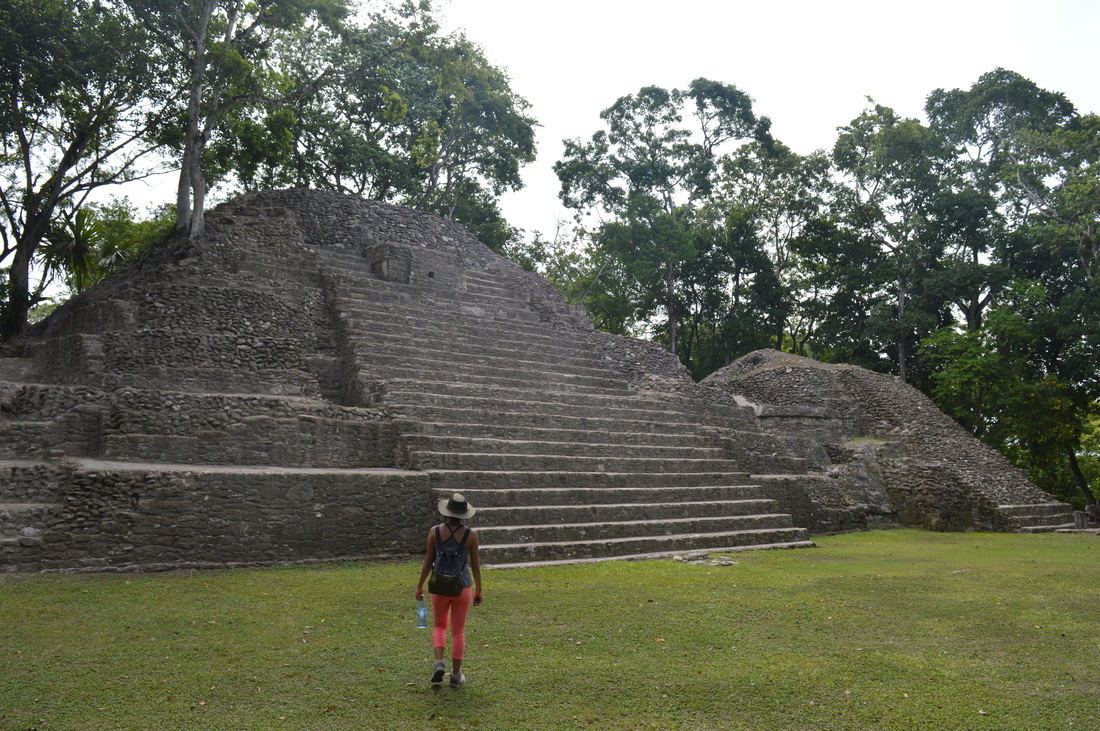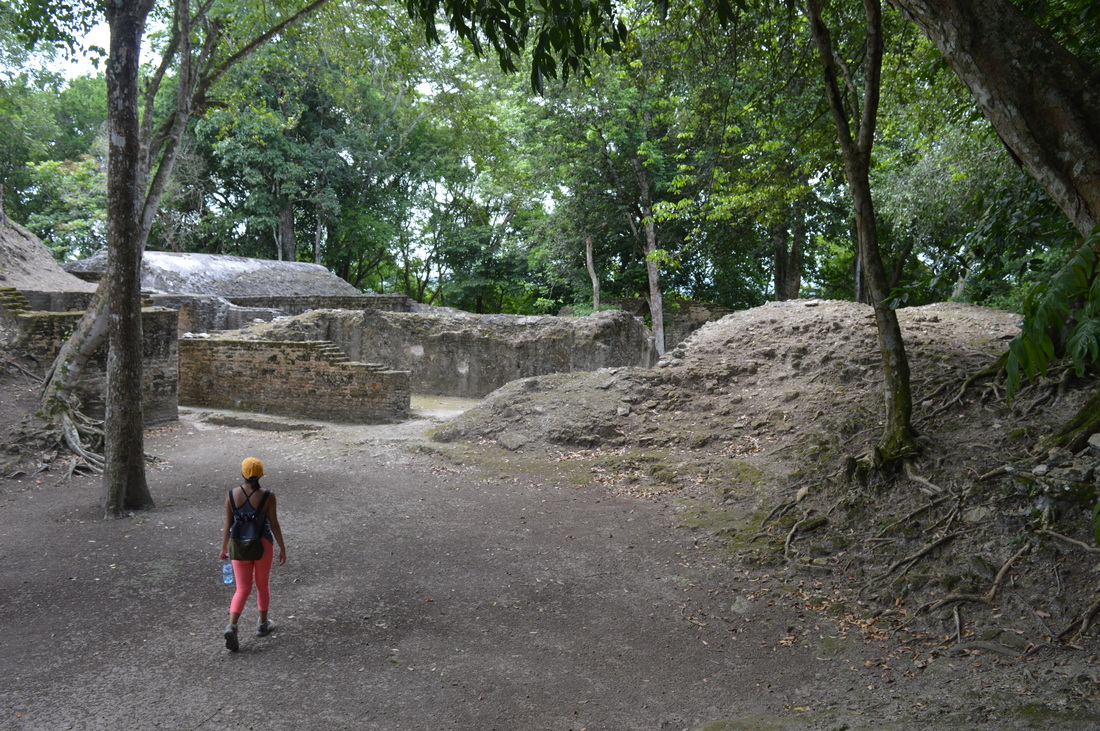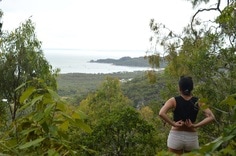|
To get to Cahal Pech from the center of San Ignacio, head up Benque Viejo Road. We walked from Midas Resort, which is further out in the opposite direction of Cahal Pech but it was no problem at all. If you are near any of the major tour companies, including MayaWalk, PACZ, etc., it will be quite easy to find your way to these under-explored local ruins. Once you get to the massive (for Belize) intersection seen below, walk towards the blue wall near the dirt path. The juxtaposition of the well preserved ruins against an industrial street is only another example of Belize's push for eco-tourism. There will be a stadium to your left as you walk along the road. It was closed for construction while we were there but looked to be a massive undergoing project. As you approach the fork in the road, you may or may not notice the tiny green sign in the middle of the black metal fence. This sign indicates that you are well on your way to Cahal Pech. Simply walk up the dirt road to your right, on the side where Andrew is standing and make your way up the steep incline. I probably recall this much more dramatically than it really was, as the humidity was quite high in September while we were there. However, I still enjoyed going during this season as I dislike large tourist crowds (ironically, I currently live in Manhattan). At the top of the hill, you will reach a visitor's center, at which point you will pay $10 BZ per person to enter the ruins. The visitor's center has a small museum to meander through that explains the origins and significance of Cahal Pech. A few steps down the path and you will find yourself in Cahal Pech. Being 5'3" tall (160 cm for my international readers), climbing the Maya stairs was much harder than expected. Especially since almost every step went up to my knees.  The great cohune palm. 'Tis literally a really hard nut to crack but apparently a resourceful part of the Maya existence. We only successfully cracked this nut by having a 180 pound man stomp on it. This palm tree provides cohune oil from its nuts, leaves for the roofing of Maya homes and is used for many other purposes.
0 Comments
Leave a Reply. |
CategoriesAll Ankle Recovery Asia Azores Barrier Reef Belize Berkeley Burma Cahal Pech California Cambodia Camping Canada Caye Caulker Central America China East Asia Europe Fiverr Gardening Gluttony Go Slow Greece Guangdong Guangzhou Hair Loss Hiking Hong Kong How To Internship Island Long Distance Luohu Commercial City Maya Maya Ruins Myanmar New York North America Ocean Ontario Paddleboarding Philippines Portugal Post Travel Post-Travel Quarantine Reflection San Ignacio Shenzhen Sickness Snorkeling Southeast Asia South Korea Stress Study Abroad Taiwan USA Vietnam Yunnan |
Thanks for reading! Let's connect >> |








